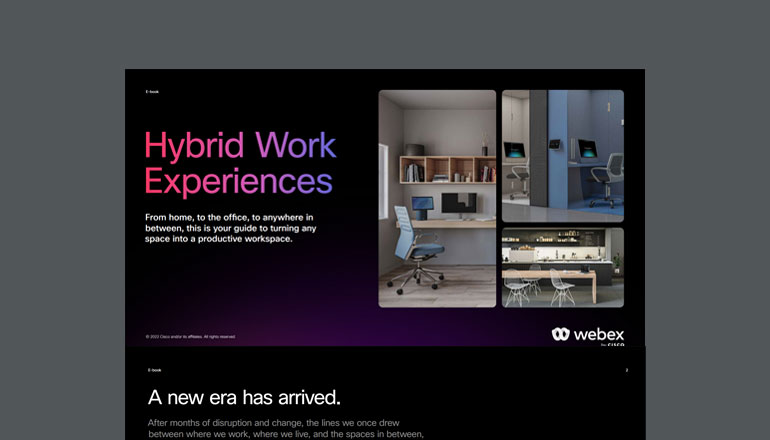COVID-19 restrictions produced a surge in e-commerce activity, and that boost will continue into the new year. In fact, in 2022, U.S. e-commerce is expected to hit $1 trillion for the first time.
Online retailers and brick-and-mortal stores are upping their e-commerce game, making advanced technology and innovation an essential factor for retail success. Here are four e-commerce trends to watch in 2022 — and the benefit of having a technology partner on your side.
Social and visual commerce
Social media is an integral part of our daily lives and a powerful tool in the world of retail — with a particular focus on visual commerce. At its core, visual commerce refers to the use of appealing and compelling content to attract consumers. This includes hashtag tracking, user-generated content, shopping on social media platforms and more. In an aesthetically driven world, visional conversion assets are a vital aspect of your retail business.
This era of digital acceleration is an ideal time to embrace the power of content. More and more social networks are transforming into retail storefronts, with opportunities to shop directly from a social post or page. According to Insider Intelligence, around half of all U.S. social network users between the ages of 18 and 43 will make at least one social commerce purchase.
With the right social media technology and software, you’ll benefit from this supplementary — and rapidly evolving — point of sale, all while improving consumer communication and growing your brand’s community.
Augmented and virtual reality
Augmented Reality (AR) and Virtual Reality (VR) are changing the way we shop. “Try before you buy” reaches a whole new level with technologies that allow you to virtually try on clothing or products, visualize a furniture item within your home or try out an experience (like a cruise ship) before purchasing tickets.
A particular VR trend to watch this year is the virtual or digital showroom. Virtual showrooms allow shoppers to view a storefront or collection with just a click of a button. Customers can explore the digital showroom just as they would a brick-and-mortar store — viewing products, examining their details, checking costs and purchasing items.
AR and VR software creates a layered shopping experience, adding a new level of engagement for consumers. In today’s world of shortened attention spans, keeping shoppers engaged is extremely important. According to the Baymard Institute, 69.82% of online shopping carts are abandoned before a purchase is made.
With innovative technology and future-focused software, you’ll keep shoppers engaged and connected with your latest offerings.
Voice shopping
In 2020, nearly 90 million U.S. adults owned smart speakers. This growing adoption has led to an increased focus on the future of voice commerce. But what is voice shopping?
Voice shopping refers to the use of a voice-powered device to purchase items or add them to a virtual shopping cart. Devices like the Amazon Alexa or Echo will respond to voice commands (and scan your past purchase history) to purchase products and track orders. Companies will benefit from the brand loyalty that comes in play with re-ordering via voice shopping.
Smaller retail businesses can jump on the voice commerce trend by adding voice-search options on their shopping apps, or utilizing Artificial Intelligence (AI) technology to track consumer trends and keywords. Making sure your products are featured in voice-search results is key to staying competitive in the voice commerce arena.
E-commerce automation
With sophisticated retail technology, you can optimize the e-commerce experience for customers and employees alike. Modern e-commerce automation tools can increase efficiency, lessen strain on retail staff, simplify processes and refine marketing efforts, all while enhancing the customer experience.
In fact, 80% of marketing automation users saw an increase in the number of leads using marketing automation software, and 77% had an increase of conversions. With automation tools and machine learning, retailers can better forecast customer demands, enhance supplier relationships and improve logistics.
Another example of e-commerce automation is inventory management. With the right software, you can automatically tag products as out-of-stock on your website/app, or list items as “low stock” to let customers know that supplies are running low. By automating these processes, you’ll relieve your employees to focus on other important tasks.
Bridging the gap to brick-and-mortar
Though e-commerce is experiencing a boost, many shoppers still want the experience and timeliness of in-person shopping. The option to buy online and pick up in-store is massively appealing to consumers who want the digital shopping experience, but the immediacy of traditional shopping.
You can also bridge the digital/in-store gap through omnichannel engagement. This marketing strategy blends shopping channels to provide a multi-faceted experience. With omnichannel shopping, customers can interact with stores through multiple touchpoints, such as text, social media, email, live chat and in-store assistance.
You need technology experts on your side.
Retail trends are constantly evolving, and it can be difficult to navigate the latest technology solutions. At Insight, we’ll help upgrade your software and hardware, manage multiple platforms, provide cybersecurity and innovate your store of the future.
We’ll work closely with your business to identify customized solutions that help increase productivity and enhance customer relationships. As the marketplace continues to transform, our team of experts will keep you on top of the latest trends and technology built for retail.






